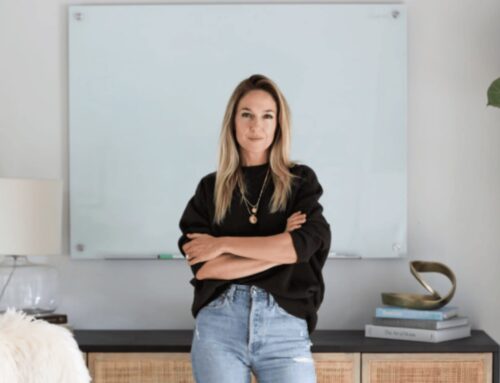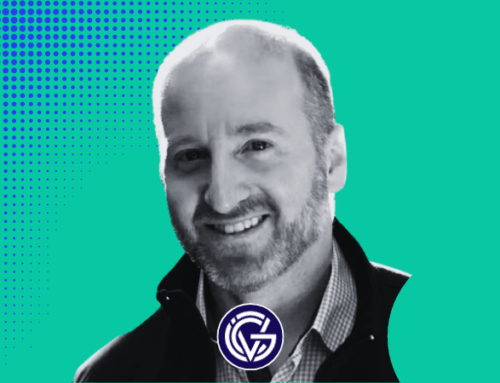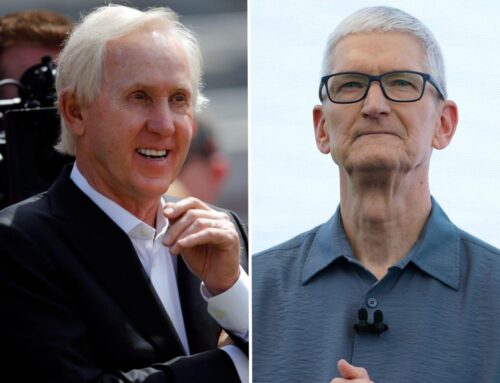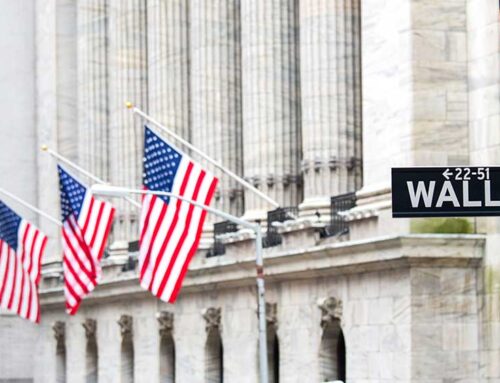Walmart heir Lukas Walton’s $15bn bet on the environment
June 18, 2025
All eyes in Builders Vision’s Chicago office, in the fashionable Fulton Market district, are trained on a large screen showing a coiled serpent eating its own tail. On a video link, the day’s keynote speaker is enthusing how, contrary to first impressions, the ouroboros’s self-destruction is actually part of its eternal recreation.
From their seats in the 16th-floor office’s lounge area, the audience follows the speaker’s every word, lapping up her invocation to “rewild our imaginations”, nodding at her assertion that “every tradition was once an innovation”.
The workshop participants all seem cut from the same cloth: bright-eyed, luxe sneakers and slacks, Silicon Valley refitted for the Midwest. You would be hard-pressed to pick out the billionaire.
And that’s just how Lukas Walton wants it. Grandson of Sam Walton, the founder of Walmart, the largest retail chain in the US by sales, the tall, curly haired 39-year-old is estimated to be worth more than $39bn, but until now has stayed out of the spotlight.
Walton, giving his first-ever media interview to the Financial Times, is open about his reticence. According to the world’s 42nd richest person, it avoids people “leading with their assumptions” of him. This quietness extends to his hobbies: he likes trail biking because “it’s one of those places I can’t be on a phone call”.
He is now changing tack. In the past 11 years he has ploughed $15bn of his own money into an impact investment fund, supporting projects that bring both financial and environmental returns — a sum that has not before been made public. The capital is earmarked for high-potential ventures in the three priority areas — ocean conservation, regenerative agriculture and clean energy — that are the focus of Builders Vision, which Walton founded eight years ago and which in effect serves as his family office.
His logic for speaking out starts with a conviction that the natural world is in trouble. He argues that the most effective solution is to harness market innovation for good, with the profit motive delivering unintended philanthropic gains. Such a strategy takes much more money than even his deep pockets allow. Tackling climate change, for example, is estimated by the OECD to require a minimum investment of $6.3tn per year.
That is why Walton wants his wealthy peers to understand what he is doing, hence his break with practice and decision to talk to the media. If the world’s 9,000-plus family offices could be persuaded to follow Builders Vision’s lead and commit to invest for a “more humane and healthy planet”, as he says, then large-scale capital could feasibly begin to flow.
“The opportunities are out there,” he says in soft yet certain tones when we speak in a side office before the workshop starts. “[The finance gap] is not for lack of pipeline. But people first need to realise that the environment is industry, it’s infrastructure, it’s financial products, it’s not simply trees.”

Walton’s confidence in the efficacy of markets to save the world is unsurprising, given his family story.
Walmart — originally named Wal-Mart Discount City — opened its first store in the small Arkansas town of Rogers. Since 1962, its strategy of offering a wide range of products at low prices has made it a symbol of American capitalism, with more than 2.1mn employees across 19 countries and net sales exceeding $648bn in 2024. Walton has no direct role in the company’s operations — and firmly declines to discuss its day-to-day management — but his interest in market capitalism predates the inheritance he received in 2005 after his father’s untimely death in a plane crash. His family owns 45 per cent of the company.
His philanthropic bent and interests in social and environmental issues also have a family flavour. John Walton, his father, was a vocal campaigner for greater autonomy and tailored learning in the public school system, helping finance the “charter school” system in its early days. Likewise, Alice Walton, his aunt and the world’s wealthiest woman, is renowned for her support for health and the arts. Protecting rivers, lakes and oceans is a staple of Walton family philanthropy; last year, the family’s foundation issued $106mn in environmental grants, including for stopping agrichemical run-off in the Mississippi River and for restoring degraded stream systems in the Colorado river basin.
Walton’s environmental outlook is shaped, in part, by his own life experience. As a preschooler, he developed a rare cancer, which was cured — according to family lore — thanks partly to his mother feeding him an all-natural diet including homegrown vegetables. To this day, he is “constantly reminded” of how lucky he is to be alive, he says: “My parents taught me the good habits that have kept me around. My mom basically raised me out of her garden, and that way I got to learn where our food comes from.”


As he tells it, these early lessons about nature’s role in human wellbeing have fired his imagination. After graduating from Colorado College in economics and environmental science, he went to Reykjavik to learn about Iceland’s pioneering efforts in renewable energy.
If there is a difference between Walton and his grandfather, it is one of ends, not means. Like Sam Walton, Lukas is looking to sell the world a product, only in his case it is green hydrogen and rare earth recycling, not diapers or dog food. “Starting with food and agriculture, I want to put my money to work and I saw there was a space for innovative, flexible capital,” he says. “My gut feeling all along has been to engage the business community because of its size and scale.”
Walton’s lifestyle retains a strong element of his grandfather’s Midwestern pragmatism. Old Sam stayed put in his small-town home of Bentonville, Arkansas, and continued to drive a battered Ford pick-up long after making his millions. His grandson, who frequently cycles to work through the downtown Chicago traffic, drove a clapped-out Subaru Forester for years; only on becoming a father did he upgrade (albeit to an equally unglamorous Volvo SUV).
“The Walton family has always kept fairly low-key right through the different generations,” says Charles Fishman, author of The Wal-Mart Effect, a book about the retailer’s economic influence. “They aren’t flashy the way that, for instance, Jeff Bezos and Lauren Sánchez are flashy.”
The result is not without its contradictions: a billionaire who wants to use the wealth that he gained from market capitalism to resolve many of the problems to which those same capitalist markets are frequently linked. To square this circle, Walton is careful not to assign blame. Whether seller or buyer, his logic runs, we are all actors in a system that needs reforming.


Central to Walton’s belief in activating the market to drive “strong positive social and environmental outcomes”, as he puts it, is that such efforts can never be charitable. Scale will only come when investors see returns that match or ideally exceed the market average.
Talk of outcomes clearly energises him. On the wall in Builders Vision’s lobby, next to upbeat slogans such as “Shifting markets and minds FOR GOOD” and “Building a more HUMANE AND HEALTHY PLANET”, hangs a large photo montage. It’s part community groups sporting beaming smiles, part large pieces of shiny, complicated tech.
The wall is designed to illustrate some of the more than 300 grantees, 100 fund managers and more than 50 portfolio companies that Builders Vision has supported to date, and as we walk along it Walton points to a random selection of investees that catch his eye, sharing a potted back-story for each. GoodLeap develops software systems for smart domestic energy solutions. Growing Home is Chicago’s only certified-organic farm, where Walton periodically volunteers. Coral Vita restores degraded reefs with coral grown in high-tech labs.
Most of the examples are classic scale-ups: too small and risky for institutional investors to pay them much heed, too established to access seed funding or angel investment. Focusing on this “missing middle” offers family offices such as Walton’s, with patient capital and a high-ish appetite for risk, a relatively wide field to pick from, says Noelle Laing, Builders Vision’s chief investment officer. Worldwide, impact investing accounts for around $1.57tn in investable assets, according to the Global Impact Investing Network, although most is controlled by banks and other large-scale financial institutions.
But Walton’s theory of change requires going one step further than picking individual investments: it requires a “systems approach” that pulls in reform-minded organisations in an effort to collectively shift given sectors on to a more impact-friendly footing.
Take oceans. The economic added value of marine activities such as aquaculture, coastal tourism and renewable marine energy could reach $9.8tn by 2050, almost four times their current rate, according to the OECD.
To accelerate this “blue economy”, Builders Vision last year provided a $70mn credit-risk guarantee for a novel nature-bond project in the Bahamas. The Inter-American Development Bank, which co-developed the initiative, projects that it will unlock $124mn for marine conservation over the next 15 years, without adding to the Bahamas’ national debt.
Despite the comparatively early-stage nature of many of his investments, Walton insists that Builders Vision is delivering on its goal of positive financial returns. Pushed for examples, he cites Clear Frontier, a Nebraska-based scale-up that purchases and then leases farmland for organic agriculture. The idea for the business came from Justin Bruch, a fifth-generation farmer from Iowa, who pitched the idea to Walton in 2019.
After the two had “worked up on a napkin” the essential business model, Walton sank an initial $50mn into the venture, giving Bruch the starting capital he needed to raise “several hundred million dollars” more. The venture now manages more than 20,000 acres of chemical-free arable land.
“His capital for me was really the stake in the ground,” says Bruch. “But to have someone like Lukas, who sees the world the way he does, say, ‘This is something I believe in and it’s important’ — to be honest, that was probably more important.”
Reuben Munger, chief investment officer of Vision Ridge, a sustainable investment fund, similarly credits Walton’s early investment with having a catalytic effect. In 2020, Builders Vision provided $25mn to support the acquisition by Munger’s fund of Fjord1, a Norwegian business operating electrified ferries. After increasing its fleet size by 50 per cent, Vision Ridge exited the business last year on what Munger describes as “attractive terms”.
“It’s incredibly hard to raise a first fund, especially in the impact space, which most investors assume is concessionary,” Munger says. “So having someone publicly back the idea that investing in impact can actually be attractive helps remove a layer of this unnecessary scepticism.”

Such scepticism-fighting is well-timed. Over the next couple of decades, the offspring of Baby Boomers (born 1946-64) are set to inherit close to $124tn, according to research consultancy Cerulli Associates. But persuading conservative family offices to join Walton’s pro-impact movement will take more than a handful of glittery case studies. As Walton himself says, the default within wealth management remains to practise “social and environmental good over there” with philanthropy and to pursue “as much return as possible over here” with investments.
To better align the two, Walton’s family office arranges regular private investment get-togethers for fellow heirs and investors to share Builders Vision’s strategy.
It is a winning tactic, says Byron Trott, a financier who has advised Walton for several decades. Reflecting on a recent “collaborative gathering” about the blue economy, he says attendees came away with a strong desire to “lean in more” to Walton’s approach. “While Lukas’s vision for a theme like oceans might seem very narrow, it turns out that many families are focused on similar topics,” says Trott, who has been nicknamed the “billionaires’ banker” for his high-end client list. “And they can obviously do a lot more together than they can individually.”
Another vocal backer of Walton’s vision is Howard W Buffett, grandson of Warren Buffett. Author of the management book Social Value Investing, Howard sees “no reason” why all rich people couldn’t follow suit. “I know lots of families that have tried to integrate this approach into their work,” he says. “In part, it comes down to how innovative you’re willing to be, as sometimes there’s risk-taking that comes with it.”
For those of a cautious disposition, his advice is to start small. Think of “your system” less as a global industry like food or energy, he recommends, and more as your local community, say, or a nearby watershed.
Even then, “very few” family offices are likely to follow Walton’s all-in strategy, Trott concedes. He says that “Lukas isn’t looking to convert people to a 100 per cent club,” rather his interest is simply to prove that impact and profit are compatible bedfellows.
Walton confirms as much. His primary ambition, he says, is for his peers to “acknowledge their agency” and, ideally, to exercise it fully. And what does he mean by “fully”? He can only speak for himself, he says diplomatically, describing his definition as being “generative with my capital, both for Builders Vision and the wider field”.
Progressive as that sounds, many in the charity world have doubts about Walton’s for-profit approach.
Just because pairing philanthropy and finance is doable, that doesn’t make it “desirable”, says Tobias Jung, director of the Centre for the Study of Philanthropy & Public Good at the University of St Andrews in Scotland. He says the two approaches are “fundamentally different” in their purpose and practice, which matters for two reasons. First, impact investment’s place within existing economic logics makes it “comparatively timid”. Second, integrating philanthropy into markets can obscure the latter’s role in harming the planet.
For Bridget Kustin, an economic anthropologist, the issue is less about principle than practice. “Deeply well-intentioned and aspirational” as many wealthy people may be, she says, the proportion using their assets for meaningful impact remains very small. The main obstacle, suggests Kustin, who is working on a project about trends in private wealth ownership at the Saïd Business School in Oxford, is loss aversion.
Still, she praises Walton for “putting his head above the parapet”. The secrecy typical of family offices, she argues, often leads to “enormous inefficiencies”. By sharing his approach, Walton not only increases understanding but also makes it easier for others to adopt similar methods.
Back above the Chicago skyline, another video is running in the Builders Vision lounge; this time it’s of a lone man dancing eccentrically in a public park. After an age, a brave bystander steps out to join him, followed by two more; before long, the park is one happy mass of jiving bodies. Sometimes, the facilitator notes, leaders need to “stand alone and look ridiculous”. Ambitious as Walton’s mission may sound, ridiculous it is not.
The next edition of FT Wealth comes out in print on July 11
Search
RECENT PRESS RELEASES
Related Post




